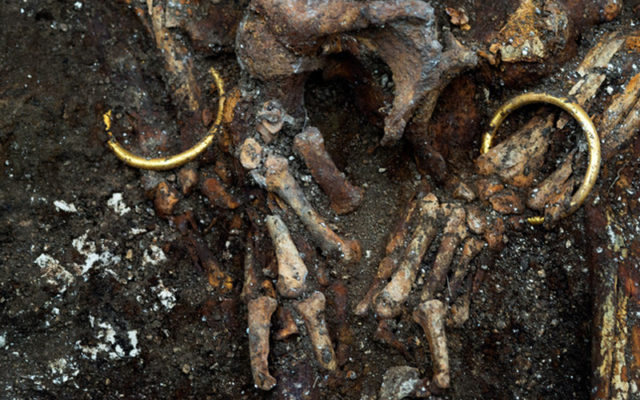Archaeologists have made an impressive excavation of a fifth-century tomb. A tomb in Lavau, Champagne, holds a 2500-year-old bronze cauldron one meter in diameter, as well as an aristocrat adorned in gold torque.
The cauldron has a lion head and the impressive head of Achelous, a River-God in Greek mythology, with three mustaches on the brim. At the center of the tomb lies the aristocrat, with other items that have remained undisturbed for 2500 years. The aristocrat was buried with a chariot, bronze vases, and more.
Achelous was believed to be a water deity who battled with Hercules and unfortunately for him, Hercules won the fight and viciously took a horn from Achelous’ head. The cauldron resembles the familiar depictions of Achelous, including the three-fanged mustache.

Who is this aristocrat that received such a king’s send off in France? This is a question that the National Archaeologist Research Institute hopes to answer. But first, they must determine the Celtic royalty’s gender, something that has perplexed archaeologists since the discovery.
In their defense, their case is not helped by the fact that the remains are severely decomposed compared to other recovered items. The unfortunate state of the corpse makes it difficult to determine the gender.
Some favored the idea that the corpse is likely male. This assumption has led many to point out that female tombs in north-eastern France indicate it is more likely that the corpse may, in fact, be female.

Whether male or female, what is known is that she or he was of high rank. Torques were favored by Celtics to denote rank. And the gold necklace protruding through the corpse’s neck weighs almost 2.5 pounds and denotes a significant figure. Compared to that of the Vix princess, this torque weighs almost 556 grams and is made of pure gold. The aristocrat, whoever he or she was, also had gold bracelets and a lignite cuff on its left bicep. The jewelry and other items found bore resemblance to those from the tomb at Reinheim.
The manner of the burial and the items recovered has made this site an intriguing encounter. This goes together with other burial sites, many of which have been of high-ranking females. Tombs such as this one and that of the Vix princess provide a fascinating insight into the lives of people during the Iron Age.
Among other items recovered were well-preserved clothing and shoes. Next to the aristocrat’s neck were amber beads. Also recovered were two iron and coral hook attachments.
Whether archaeologists are able to determine the sex of the remains is something we will have to continue waiting for. Among the ruins lies an aristocrat adorned in gold and buried with a chariot. More questions have been answered then left unanswered. This find will go a long way in assisting historians in reconstructing the lives of past civilizations, Past Horizons reported.
Will this discovery help us to understand how people traded and traveled from one region to the next? This may just be the beginning of a legend. Certainly, the manner of the burial denotes that this person had been someone of significance.
